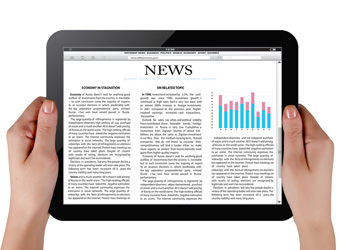The smart Trick of Popular News That Nobody is Discussing
Table of ContentsPopular News Things To Know Before You Get ThisThe Buzz on Popular NewsPopular News - An OverviewSome Known Factual Statements About Popular News
Age is additionally an aspect in the means people watch the duty of social media. Younger social networks information customers are more probable to state it has actually influenced their knowing for the much better. Regarding half of social media news customers ages 18 to 29 (48%) claim news on social networks makes them far better educated, compared with 37% of those 30 to 49, 28% of those 50 to 64, and 27% of those 65 and older.Journalists consider information worths when figuring out whether to cover an occasion or statement. Below are the worths that we take into consideration when creating an outreach technique. Perhaps one of the most vital aspect of newsworthiness is whether the story being interacted influences a news electrical outlet's audience. As an example, allow's imagine researchers have actually located an economical service to an usual trouble.
Study on a state's brand-new tax code most likely won't generate the very same interest across state borders. Sometimes specialists can assist localize a larger national tale that affects more than just a city or state.
If you are releasing newsworthy research, loop in MarComm before the article being published to ensure that the pitch can stress the latest aspect of the story: the magazine of the research study. Occasions and news that include top-level figures are extra most likely to create media coverage. Check outs from national numbers frequently require months of prep work because of awaited neighborhood rate of interest.
Getting The Popular News To Work

Human rate of interest elements can include news worth to various other tales that might seem doing not have in the other values. The novelty or peculiarity of a circumstance can aid affect whether an information outlet is most likely to cover a tale. While this is not an extensive listing, checking to see if your news thing or event has these qualities before contacting us will certainly help you identify which components hold the most information value.

Everything about Popular News
There is likewise substantial proof that more consumers can start to pay for news in the futureif publishers can recognize them and offer them well. Half of those who do not pay for information proactively look for news and resemble clients in different methods. Popular News. And virtually 2 in 10 of those who do not subscribe to information currently indicate they are inclined check out this site to begin to pay in the future
We then ask a set of concerns More hints to establish whether people pay for particular types of information sources. We asked people to name the sources they use most oftenwhether they spend for them or nothow they utilize them, the certain things they think about important concerning them, and some relevant concerns regarding the price and value of that source.
Individuals are drawn to information as a whole for two reasons over others: A wish to be notified people (paper clients in specific are very inspired by this) and because the publication they subscribe to excels at covering specific subjects about which those customers especially care. While there are a host of factors, the No.
Greater than 4 in 10 additionally mention the reality that close friends and household register for the very same item. Greater than a third of individuals state they originally subscribed in reaction to a price cut or promotion. In print, people likewise are relocated heavily to subscribe to obtain discount coupons that save them money, something that has untapped effects in digital.
Facts About Popular News Uncovered

We asked everybody who informed us they have a regular free resource of information how most likely they would be to spend for it. Even more than a quarter (26 percent) state they would certainly be at the very least rather likely to start spending for itand 10 percent are very or very most likely. These likely payers have a tendency to be information candidates, and they also tend to be people who currently spend for a news registration in addition to the source they adhere to completely free.
Of those who do pay, 54 percent subscribe to papers in print or electronically, which represents 29 percent of Americans on the whole. A lot of them get a print publication together with their paper and pay for two to four information sources in total amount, some a lot more. And while 53 percent are long-time clients (5+ years), more than a quarter (27 percent) have actually purchased their newspaper subscription within the previous year.
Couple of print clients think it likely they will certainly switch over to a digital-only membership in the future, and over half of those who like electronic have actually never ever paid for a print version of the same source. Popular News. Totally 75 percent of newspaper payers say they mainly checked out the paper in print, while 21 percent are mostly electronic users, and 4 percent explain themselves as equally divided